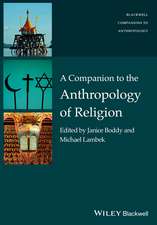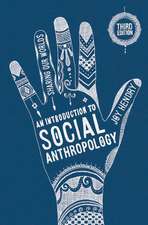Morphological Analysis of Cultural DNA: Tools for Decoding Culture-Embedded Forms: KAIST Research Series
Editat de Ji-Hyun Leeen Limba Engleză Paperback – 29 iun 2018
Following an introduction covering some fundamental theories of cultural DNA research, part two of the book describes morphological analysis in architecture, with examples from Malaysia and China. Part three then moves up to morphological analysis at the urban scale, including discussion of morphological evolution in France, development of a model Korean city, and introducing a rule-based generative analysis approach for urban planning. Part four considers methods for analysing the DNA of other cultural artefacts such as online games, novels, cars, and music, and part five introduces the tools under development that aid morphological cultural DNA research including topics about shape grammar, building information modeling (BIM), cultural persona, and prototyping.
The book will be of significant interest to those involved in the cultural aspects of urban and architectural design, cultural informatics and design research.
| Toate formatele și edițiile | Preț | Express |
|---|---|---|
| Paperback (1) | 720.98 lei 38-44 zile | |
| Springer Nature Singapore – 29 iun 2018 | 720.98 lei 38-44 zile | |
| Hardback (1) | 565.59 lei 38-44 zile | |
| Springer Nature Singapore – 21 oct 2016 | 565.59 lei 38-44 zile |
Preț: 720.98 lei
Preț vechi: 936.34 lei
-23% Nou
Puncte Express: 1081
Preț estimativ în valută:
138.09€ • 149.71$ • 114.80£
138.09€ • 149.71$ • 114.80£
Carte tipărită la comandă
Livrare economică 28 noiembrie-04 decembrie
Preluare comenzi: 021 569.72.76
Specificații
ISBN-13: 9789811095924
ISBN-10: 9811095922
Pagini: 240
Ilustrații: VIII, 240 p. 107 illus., 59 illus. in color.
Dimensiuni: 155 x 235 mm
Ediția:Softcover reprint of the original 1st ed. 2017
Editura: Springer Nature Singapore
Colecția Springer
Seria KAIST Research Series
Locul publicării:Singapore, Singapore
ISBN-10: 9811095922
Pagini: 240
Ilustrații: VIII, 240 p. 107 illus., 59 illus. in color.
Dimensiuni: 155 x 235 mm
Ediția:Softcover reprint of the original 1st ed. 2017
Editura: Springer Nature Singapore
Colecția Springer
Seria KAIST Research Series
Locul publicării:Singapore, Singapore
Cuprins
1 Theories for Cultural DNA Research.- 2 Morphological Analysis at Architectural Scale.- 3 Morphological Analysis at Urban Scale.- 4 Analysis of Other Cultural Artifacts.- 5 Tools.
Notă biografică
Ji-Hyun Lee is an Associate Professor at the Graduate School of Culture Technology (GSCT) in Korea Advanced Institute of Science Technology (KAIST). She received her Ph.D. in School of Architecture (Computational Design) at Carnegie Mellon University writing a thesis about integrating housing design and case-based reasoning. Since joining the GSCT at KAIST, her research focus narrowed down to three interdisciplinary areas that are not mutually exclusive: (1) calculation for UX + service design, (2) cultural DNA with morphological analysis, and (3) computational creativity. These explorations result in computer-based frameworks or systems contributing to the enhancement of the calculability using algorithmic and/or heuristic computational methods. In other words, her research focus is on ‘computational culture’ as an extension of computational design.
She served for the Secretary of Computer-Aided Architectural Design Research in Asia (CAADRIA) from 2008 to 2010. Currently, she is the Director of the Information-Based Design (IBD) Research Group, Descartes Lab in KAIST and also serving as the Editorial Board Member for Architecture Research and International Journal of Innovations in Information Technology. She also serves as a Director of Korean Society of Service Design and Innovation (KSSDI), Korean Society of Design Science (KSDS) and HCI Korea. She is a member of Architectural Institute of Korea (AIK), Korea Intelligent Information System Society (KIISS), Society of CAD/ CAM Engineers and SIG-Design Creativity of the Design Society.
She served for the Secretary of Computer-Aided Architectural Design Research in Asia (CAADRIA) from 2008 to 2010. Currently, she is the Director of the Information-Based Design (IBD) Research Group, Descartes Lab in KAIST and also serving as the Editorial Board Member for Architecture Research and International Journal of Innovations in Information Technology. She also serves as a Director of Korean Society of Service Design and Innovation (KSSDI), Korean Society of Design Science (KSDS) and HCI Korea. She is a member of Architectural Institute of Korea (AIK), Korea Intelligent Information System Society (KIISS), Society of CAD/ CAM Engineers and SIG-Design Creativity of the Design Society.
Textul de pe ultima copertă
This volume describes research in computational design which implements shape grammars or space syntax for morphological analysis, applying these scientific and rule-based methodologies to cultural aspects of the field. The term ‘cultural DNA’ describes the effort to explore computational design from the perspectives of a meme, a socio-cultural analogy to genes. Based on the 1st Cultural DNA Workshop, held at KAIST, Daejeon, Korea in 2015, the book considers whether there is such a thing as a ‘cultural DNA’ common throughout various domains, and if so how computer-assisted tools and methodologies play a role in its investigation.
Following an introduction covering some fundamental theories of cultural DNA research, part two of the book describes morphological analysis in architecture, with examples from Malaysia and China. Part three then moves up to morphological analysis at the urban scale, including discussion of morphological evolution in France, development of a model Korean city, and introducing a rule-based generative analysis approach for urban planning. Part four considers methods for analysing the DNA of other cultural artefacts such as online games, novels, cars, and music, and part five introduces the tools under development that aid morphological cultural DNA research including topics about shape grammar, building information modeling (BIM), cultural persona, and prototyping.
The book will be of significant interest to those involved in the cultural aspects of urban and architectural design, cultural informatics and design research.
Following an introduction covering some fundamental theories of cultural DNA research, part two of the book describes morphological analysis in architecture, with examples from Malaysia and China. Part three then moves up to morphological analysis at the urban scale, including discussion of morphological evolution in France, development of a model Korean city, and introducing a rule-based generative analysis approach for urban planning. Part four considers methods for analysing the DNA of other cultural artefacts such as online games, novels, cars, and music, and part five introduces the tools under development that aid morphological cultural DNA research including topics about shape grammar, building information modeling (BIM), cultural persona, and prototyping.
The book will be of significant interest to those involved in the cultural aspects of urban and architectural design, cultural informatics and design research.
Caracteristici
Describes fundamental theories and methodologies behind cultural DNA research backed-up with real-world examples from architecture and urban planning Introduce the various tools under research and development that aid morphological cultural DNA research at different scales Brings together research from groups working on cultural DNA across Asia and Europe Includes supplementary material: sn.pub/extras

























